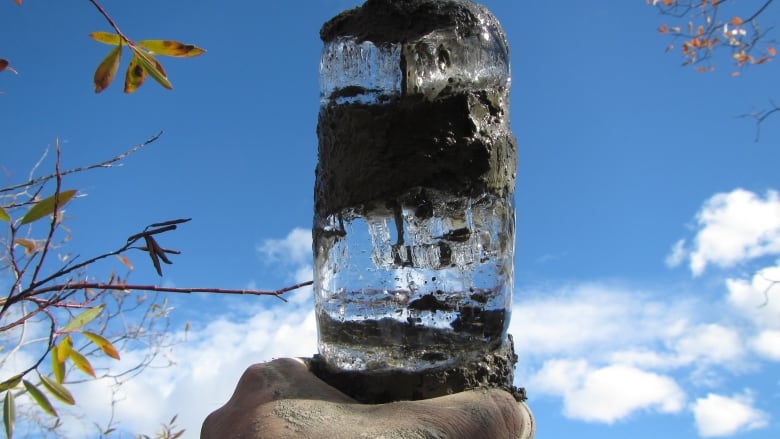Alaska Highway permafrost vulnerable to climate change
Researchers look at colouring highway surface white, draining water away from road

Researchers at Yukon College and the territory's highways department are ramping up efforts to preserve permafrost under roadways and prevent frost heaves and other damage.
The problem is expected to worsen with climate change and warmer temperatures.
Brian Horton, the research coordinator for the college's Northern Climate ExChange at the Yukon Research Centre, says much of the work is being done on the section of the North Alaska Highway between Burwash Landing, Yukon, and Beaver Creek, Yukon.
The approximately 200-kilometre stretch of road is infamous for frost heaves, potholes and rough patches. Horton says most of it is also built on permafrost.
Horton says a three year study that's just been finished pinpoints the areas where the permafrost is most vulnerable to melting. He says engineers in the highways department can put that information to use.

He says the researchers who worked on the study are shifting their attention to preserving permafrost under the roadway.
"They're working together to identify engineering work, engineering solutions, that will help actually stop thaw of permafrost," he says, "so to either cool the earth underneath the highway... or to at least stabilize the temperature."
Head researcher Fabrice Calmels says there is already a short section of roadway south of Beaver Creek that's been used to test different techniques for preserving permafrost.

"Making a ditch to intercept runoff and prevent water accumulation along the highway, you can make a gentle slope along the embankment to prevent snow accumulation because the snow and water are some of the two most damaging things for permafrost," he says.
Another idea, says Calmels, is to find ways to repel sunlight from the road surface.
"You can also try to put white pavement or clear pavement [on] the highway. I guess you already know when you put black on and you are in the sun you become very, very hot.
"It's the same thing for a road, so if you put white on the road or something clear it is less prone to heat," he says.
Another potential cooling technique is to use boulders in the road base leaving room for air to circulate below the surface.
Calmels says his crew will likely start collecting data from the site in two to three years on how well the experiments are working. He says, if successful, the knowledge could be used around the world.